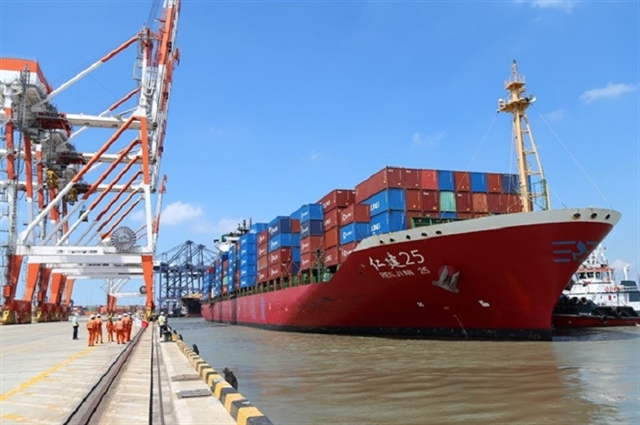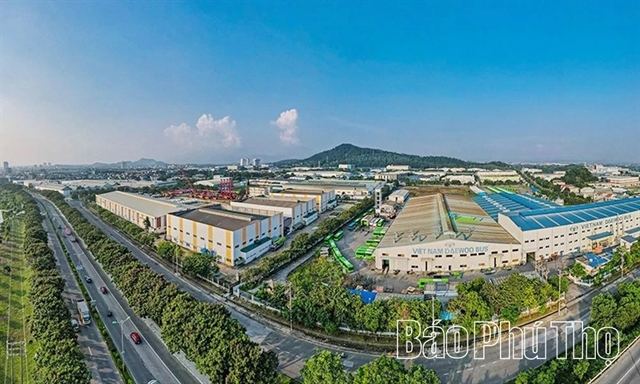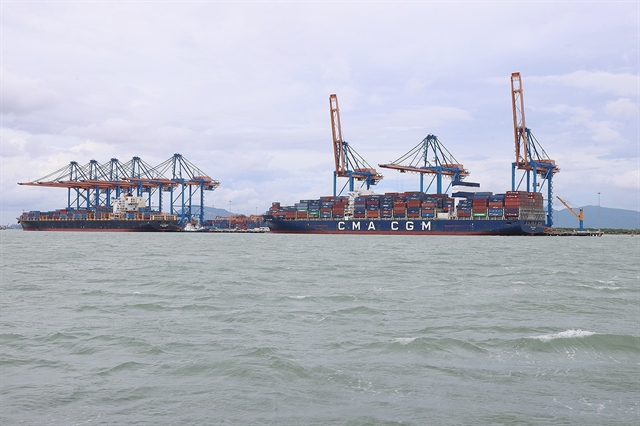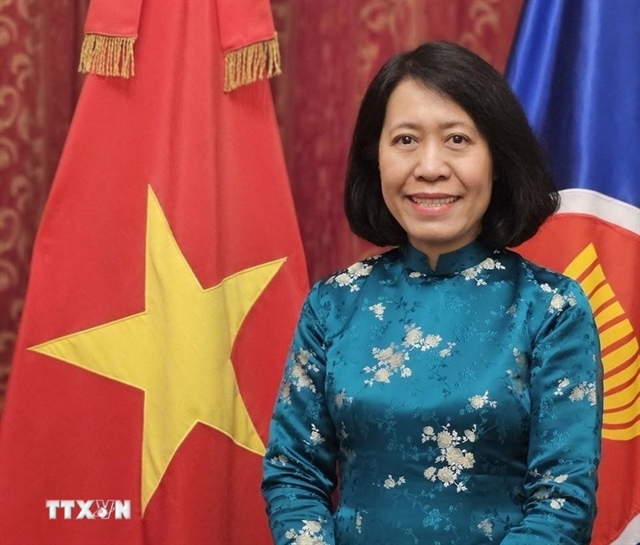 Economy
Economy

 |
| Cần Giờ International Transit Port planning area. —VNA/VNS Photo |
HÀ NỘI — Việt Nam should prioritise investment in seaport infrastructure and the development of its fleet to boost its competitiveness in the global maritime market, according to the Việt Nam Maritime Corporation (VIMC).
The Việt Nam Maritime Administration reported a strong performance in the country's maritime sector for 2024, with a 14 per cent increase in cargo volume passing through ports, totaling 864.4 million tonnes. Container cargo also saw significant growth, rising 21 per cent to 29.9 million TEUs.
Additionally, the number of ships passing through the ports increased by two per cent, bringing the total to 102,670 units. The inland waterway transport sector also experienced an eight per cent growth in vehicles, with approximately 380,100 units.
In particular, the volume of goods transported by Vietnamese fleets showed positive growth of three per cent in 2024.
These figures point to a thriving maritime industry. Nguyễn Cảnh Tĩnh, VIMC general director, noted that the continual increase in the size of ships and cargo volume has also significantly strained Việt Nam’s maritime infrastructure.
With cargo volume surpassing the 30 million TEUs mark, the current capacity of the nation's seaports has exceeded earlier forecasts from just a decade ago. In comparison, Singapore - currently the largest transit port in the region - handles around 37 million TEUs annually.
With this growth, Tĩnh believes Việt Nam has the potential to surpass Singapore in the near future, provided it addresses key infrastructure issues.
One of the most pressing challenges is the dredging of maritime channels. Tĩnh emphasised that dredging projects must be fast-tracked to accommodate larger vessels.
However, the Việt Nam Maritime Administration has highlighted a shortage of funding for these critical projects.
To tackle these challenges, VIMC is focusing its efforts on the development of deep-water ports, such as the Cần Giờ international transit port.
The Cần Giờ port is expected to play a pivotal role in reducing transportation costs for domestic goods and enhancing Việt Nam’s access to the global supply chain.
VIMC hopes that the Prime Minister will approve this project, while HCM City rapidly completes the procedures for selecting investors.
Once operational, the Cần Giờ port, alongside the Cái Mép - Thị Vải port cluster, will significantly enhance the competitiveness of Việt Nam’s maritime industry.
This will not only restructure the Asian maritime map but also reduce Việt Nam’s reliance on transshipment through Singapore. With direct international shipping routes, Vietnamese goods will enjoy improved access to foreign markets.
Along with improving port infrastructure, VIMC is also prioritising the development of a strong national fleet. By collaborating with some of the world’s largest shipping lines, VIMC aims to build a fleet capable of meeting both domestic and international transport needs. This is essential for ensuring that Vietnamese goods can directly reach global markets.
Tĩnh stressed that Government's support is crucial to encourage the growth of large maritime enterprises. Several supportive measures have already been introduced, including the national seaport system development master plan (2021-2030) and the Việt Nam maritime fleet development project.
These plans aim to foster sustainable growth in the maritime sector, alongside the establishment of green ports that meet environmental standards.
In addition, Minister of Transport Trần Hồng Minh emphasised that Việt Nam’s maritime sector must leverage IT and artificial intelligence to streamline port activities, reduce ship waiting times and enhance operational efficiency.
Việt Nam is also looking to build green and smart ports that align with the country’s environmental commitments.
Minister Minh has called on the maritime industry to draw lessons from other nations in the development of sustainable and technologically advanced port systems. — VNS




